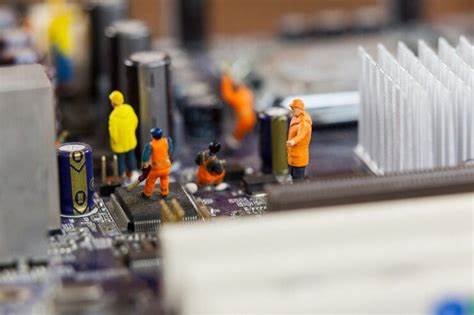Navigating the Path to Clean Energy: A Guide to PEM Electrolyzers and Their Operation

In the quest for sustainable energy sources, hydrogen emerges as a promising contender. As the world pivots towards decarbonization, hydrogen presents itself as a clean and versatile energy carrier. Among the various methods of hydrogen production, Proton Exchange Membrane (PEM) electrolyzers stand out for their efficiency and potential scalability. This guide delves into the workings of PEM electrolyzers and provides insights into their operation, offering a roadmap towards a cleaner energy future.
Understanding PEM Electrolyzers
PEM electrolyzers utilize an electrochemical process to split water into hydrogen and oxygen. Central to their operation is the Proton Exchange Membrane, a solid polymer electrolyte that conducts protons while blocking electrons. This membrane separates the anode and cathode compartments within the electrolyzer.
At the anode, water is oxidized to produce oxygen gas and positively charged protons (H+). Simultaneously, electrons are released, Understanding PEM Electrolysis through an external circuit to the cathode. Meanwhile, at the cathode, protons migrate through the membrane and combine with electrons, forming hydrogen gas. The overall reaction can be represented as:
2�2�→2�2+�22H2O→2H2+O2
Advantages of PEM Electrolyzers
- High Efficiency: PEM electrolyzers operate at high current densities and exhibit rapid response times, resulting in impressive energy conversion efficiencies.
- Flexibility: These electrolyzers can operate over a wide range of loads and have the ability to respond quickly to fluctuations in demand, making them suitable for integration with renewable energy sources like wind and solar.
- Compact Design: PEM electrolyzers have a compact footprint and can be easily scaled up or down to meet specific application requirements, whether for industrial-scale hydrogen production or decentralized systems.
- Purity of Hydrogen: The produced hydrogen is of high purity, making it suitable for various applications, including fuel cells for transportation and power generation.
Operating PEM Electrolyzers
- Optimizing Operating Conditions: PEM electrolyzers operate most efficiently within specific temperature and pressure ranges. Maintaining optimal conditions ensures maximum performance and longevity of the electrolyzer.
- Electrolyte Management: Proper hydration of the proton exchange membrane is crucial for efficient proton conduction. Monitoring and maintaining adequate water levels in the membrane are essential for optimal electrolyzer performance.
- Control Systems: Advanced control systems regulate key parameters such as current density, temperature, and pressure to ensure stable and efficient operation of the electrolyzer. Real-time monitoring and adjustments optimize performance and prevent potential issues.
- Maintenance: Regular maintenance, including membrane inspection, electrode cleaning, and replacement of components, is necessary to prolong the lifespan of PEM electrolyzers and minimize downtime.
Applications of PEM Electrolyzers
- Hydrogen Fuel Production: PEM electrolyzers play a vital role in producing hydrogen for fuel cell vehicles, offering a clean alternative to traditional fossil fuels and contributing to the reduction of greenhouse gas emissions.
- Energy Storage: Hydrogen generated by PEM electrolyzers can be stored and utilized as a renewable energy storage medium, helping to balance supply and demand in grid applications and enabling greater integration of intermittent renewable energy sources.
- Industrial Processes: Hydrogen produced by PEM electrolysis finds applications in various industrial processes, including chemical synthesis, metallurgy, and electronics manufacturing, where it serves as a clean and efficient energy source.
- Decentralized Power Generation: PEM electrolyzers can be deployed in remote or off-grid locations to produce hydrogen for on-site power generation, providing a reliable and sustainable energy solution independent of traditional grid infrastructure.
Conclusion
As the world transitions towards a low-carbon economy, PEM electrolyzers offer a promising pathway to clean and sustainable energy. With their high efficiency, flexibility, and versatility, PEM electrolyzers are poised to play a crucial role in unlocking the potential of hydrogen as a key enabler of the energy transition. By understanding the principles of operation and optimizing performance, we can navigate the path to clean energy and realize a more sustainable future.
Top of Form
Share this post:
In the quest for sustainable energy sources, hydrogen emerges as a promising contender. As the world pivots towards decarbonization, hydrogen presents itself as a clean and versatile energy carrier. Among the various methods of hydrogen production, Proton Exchange Membrane (PEM) electrolyzers stand out for their efficiency and potential scalability. This guide delves into the workings…